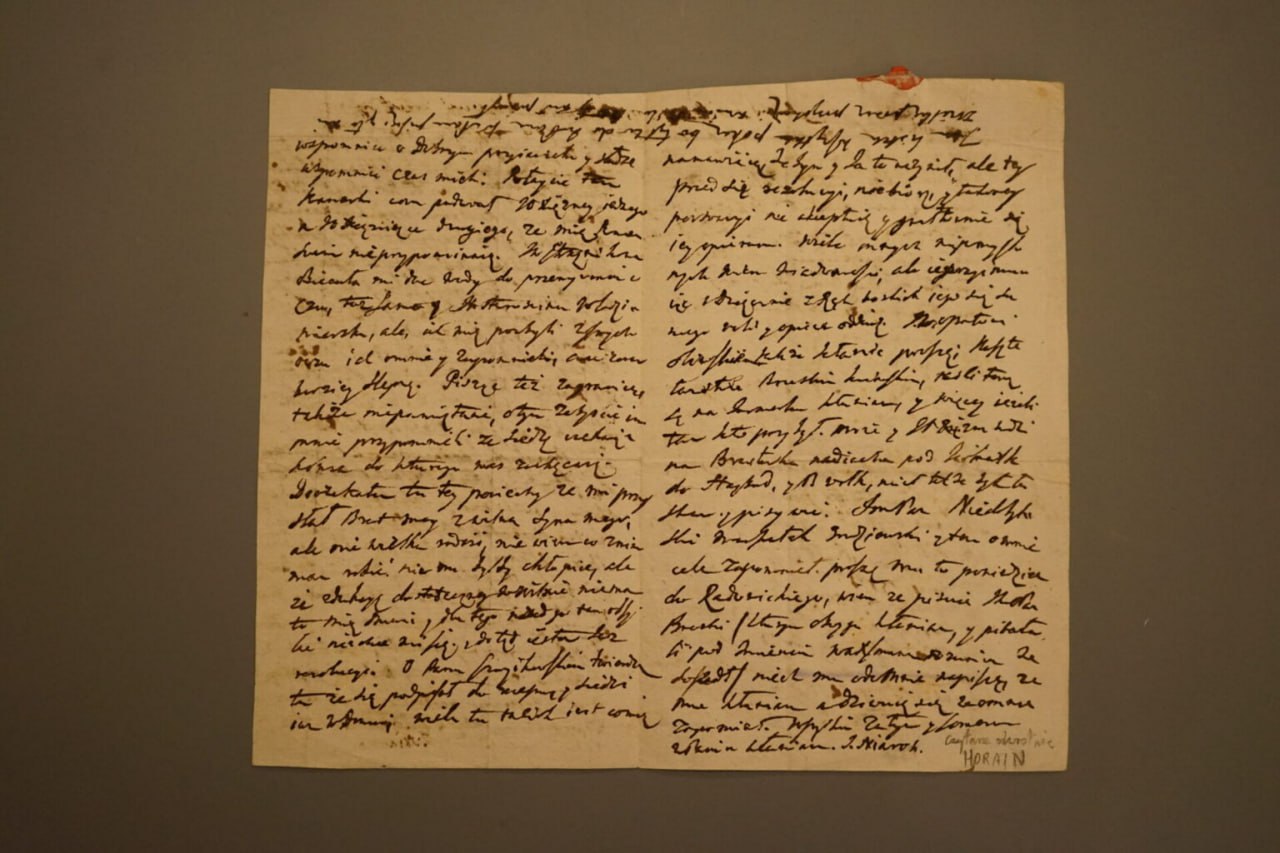
The Museum of Free Belarus has enriched its collection with a valuable historical artifact — a secret letter from Jan Antoni Harain, a defender against Russian encroachment on the Polish–Lithuanian Commonwealth. “This addition expands the collection of historical artifacts from various eras, reflecting the centuries-long struggle of the Belarusian people for freedom and dignity,” the museum noted.
The acquired secret letter was written in 1773 by Jan Antoni Harain, a statesman of the Grand Duchy of Lithuania and a participant in the Bar Confederation, who at the time held the position of Voivode of Brest. The letter was composed during a period when the territory of the Polish–Lithuanian Commonwealth was overrun by Russian and Prussian troops, and fierce conflicts raged among different political factions within the country.

For this reason, the author of the letter took several precautionary measures, fully aware of the level of surveillance over private correspondence in the state. On the envelope, he signed his name as “J. Niaroh,” which, when read backward, revealed the true identity of the sender — “J. Horain.”
The recipient of the letter, addressed to Gdańsk, is listed as someone named “Grycen,” but preliminary research has not yet identified this person among the contemporaries of the Voivode of Brest. Concluding the letter, the Voivode conspicuously wrote a greeting to the Russian ambassador, “my dear Shtakelberg” — likely as irony or to protect the letter from prying eyes. The anonymity of the author was further ensured by the absence of a wax seal impression.
The letter was written on July 17, 1773, during the Partition Sejm (1773–1775), initiated by Russia, Prussia, and Austria to legalize the First Partition of the Polish–Lithuanian Commonwealth. Three months earlier, the famous protest of the Novogrudok nobleman Tadeusz Rejtan took place (“Trample me, do not trample the state!”), and two years prior, the Voivode of Brest, Jan Antoni Harain, had joined the Bar Confederation, opposing Russian aggression and King Stanisław August Poniatowski.
In his letter, Jan Antoni Harain touches on various political issues, noting that he was being urged to “sign something” — likely referring to the legalization of the First Partition — but the Voivode firmly states that he “does not take resolutions and does not accept such persuasion” (rezolucji nie biorę i takowej perswazji nie akceptuję). The letter also mentions Harain’s nephew, Jan Nepomucen, who later participated in Tadeusz Kościuszko’s uprising.
Jan Antoni Harain (1686–1777) was a statesman and official of the Polish–Lithuanian Commonwealth. He belonged to the noble Harain family of the Sreniawa coat of arms. In his youth, he supported Stanisław Leszczyński’s faction and fought against King Augustus II. In 1720, he was appointed Vilnius Grodzkie Clerk, and in 1729, he was one of those who disrupted a session of the Warsaw Sejm. In 1731, he became Vilnius Cupbearer, and in 1748, Vilnius Deputy Chamberlain. In 1733, he received the starosties of Mahilyow and Yelva. In 1764, he was appointed Castellan of Brest, and in 1765, he was awarded the Order of Saint Stanislaus. In 1768, he became Voivode of Brest, a position he held until his death in 1777.
The acquisition of this extraordinary artifact was made possible thanks to the support of the Embassy of the Kingdom of the Netherlands in Warsaw for the Museum of Free Belarus.
Original article: Belarusian Institute of Public History